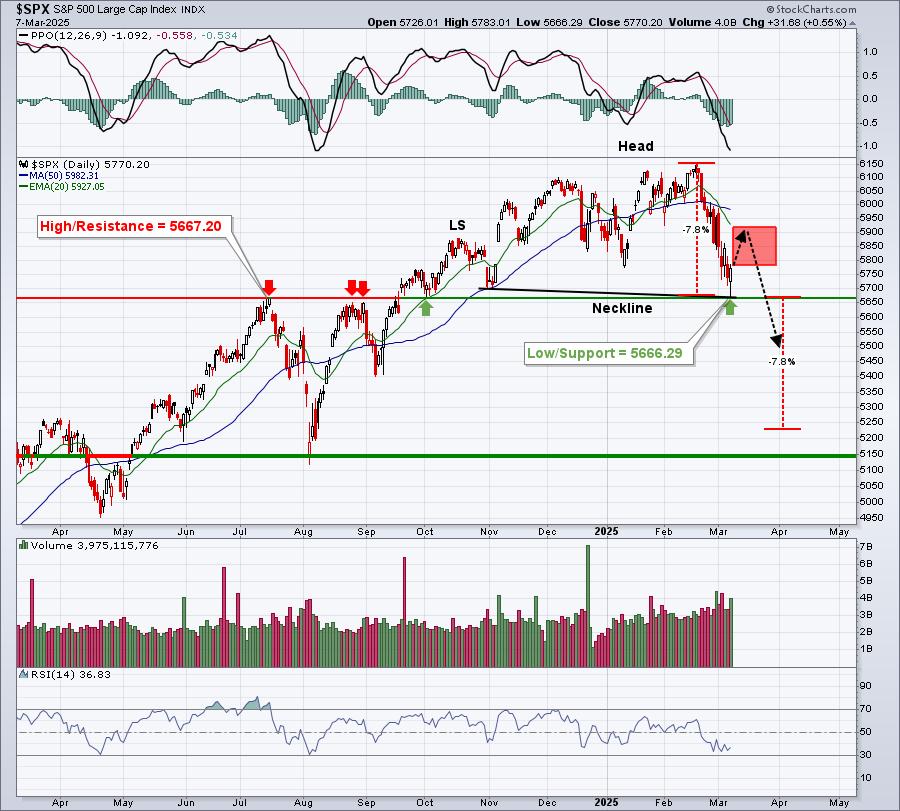TAKEAWAYS
- The first step when deciding which stocks to invest in, should be to monitor the broader market
- After getting an idea of the overall market, drill down to the different sectors
- The last step is to zero in on the industry and identify the stocks that are moving the most
 Buying the dip is a something of go-to strategy for many traders and investors. The trick here is to buy strength on the way down and to avoid a "falling knife" scenario (or at least plan for it in case it does happen).
Buying the dip is a something of go-to strategy for many traders and investors. The trick here is to buy strength on the way down and to avoid a "falling knife" scenario (or at least plan for it in case it does happen).
The catch: With so many stocks to choose from, it's impossible to monitor every stock you're interested in. You're bound to miss something.
So, here's a quick and simple morning routine to help you spot potential buy-the-dip opportunities when an index takes a significant hit.
Step 1: Monitor the Pulse of the Broader Market
Last Monday, the Dow ($INDU) was on its way to making a record high while the S&P 500 ($SPX) and Nasdaq Composite ($COMPQ) were falling. The Nasdaq was hit the hardest.
To dive deeper, you should check the Market Summary tool, which can be found in the StockCharts Member Tools section. Here's a snapshot of what it looked like.
The Nasdaq Composite was down 0.85% at the time. It was a clear laggard, so I focused there to spot a few potential buy-the-dip picks. After looking at the broader market, it helps to narrow the search by then looking at the Sector Summary, also in the StockCharts Member Tools.
Step 2: Check Sector Performance
The Technology Select SPDR ETF, XLK, the StockCharts sector proxy, was the biggest underperformer of the bunch (see below).
Given the Nasdaq's tech-heavy nature, this summary confirms what you might have already expected. So, you narrow down even more, looking at the Industry Summary (also in Member Tools) to see which industry group is underperforming in the sector.
Step 3: Check Industry Performance
While tech is the biggest laggard overall, not every industry within the sector is struggling. Right now, let's focus on stronger stocks that are getting sold (see below).
Under the chart on the left, click the MarketCarpet icon (second from left) to pinpoint stocks that match your investment objective.
Step 4: Using the Market Carpet to Identify Tradable Stocks
Broadcom (AVGO) took the biggest hit on Monday (see below). Nvidia (NVDA) didn't take as big a plunge, but with its AI applications, it's practically the world's most important stock right now. Let's zero in on these two.
Take a look at a daily six-month chart of Broadcom (AVGO).
CHART 1. DAILY CHART OF BROADCOM. Note the dueling Fib templates between bulls and bears.Chart source: StockCharts.com. For educational purposes.
The longer-term uptrend is still holding strong (we're not showing it here to focus on the recent price moves). Even with the dip since June, the StockChartsTechnical Rank (SCTR) score only slightly dropped below 90, which still signals technical bullishness.
The orange Fibonacci Retracement, drawn from the June high to the August low, is likely the template bears are eyeing. The 61.8% retracement at $163 would have signaled an opportunity for short sellers to enter or add to their position. But because the price pushed past that level, it likely caused some hesitation. Plus, momentum, as shown by the Chaikin Money Flow (CMF), favors the bulls.
Now, check out the blue Fibonacci Retracement drawn from the August low to high. Bulls jumped in at the 38.2% level ($157). However, AVGO could still drop between the 50% and 61.8% levels ($151 to $145) and remain bullish, marking an ideal entry point for those looking to go long.
From here, let's shift to a daily nine-month chart of NVDA.
CHART 2. DAILY CHART OF NVIDIA. You can see the threshold levels determining both uptrend and downtrend.
With an SCTR line above 90, NVDA is technically bullish across multiple indicators and timeframes. Despite the 200-, 100-, and 50-day simple moving averages (SMAs) in "full sail" position, NVDA's price action is softening a bit.

Over the last eight sessions, NVDA's price action has been hovering in tight consolidation mode. For NVDA's uptrend to remain intact, it has to do two things:
- Stay above the August swing low of $91 (you might also get a bounce at the $97.50 range as it coincides with March highs (resistance-turned-support). The blue dotted lines below the current price marks both of these levels.
- Break above the three consecutive resistance levels at roughly $130, $136, and $140 (see blue dotted lines above the current price).
Closing Thoughts
The goal here is to show you one of many morning routines to uncover market opportunities. In this case, we used StockCharts' market, sector, and industry summary tools to find trades. It could have been other stocks, but the key takeaway is learning how to do it yourself.
Disclaimer: This blog is for educational purposes only and should not be construed as financial advice. The ideas and strategies should never be used without first assessing your personal and financial situation, or without consulting a financial professional.
Happy charting!






